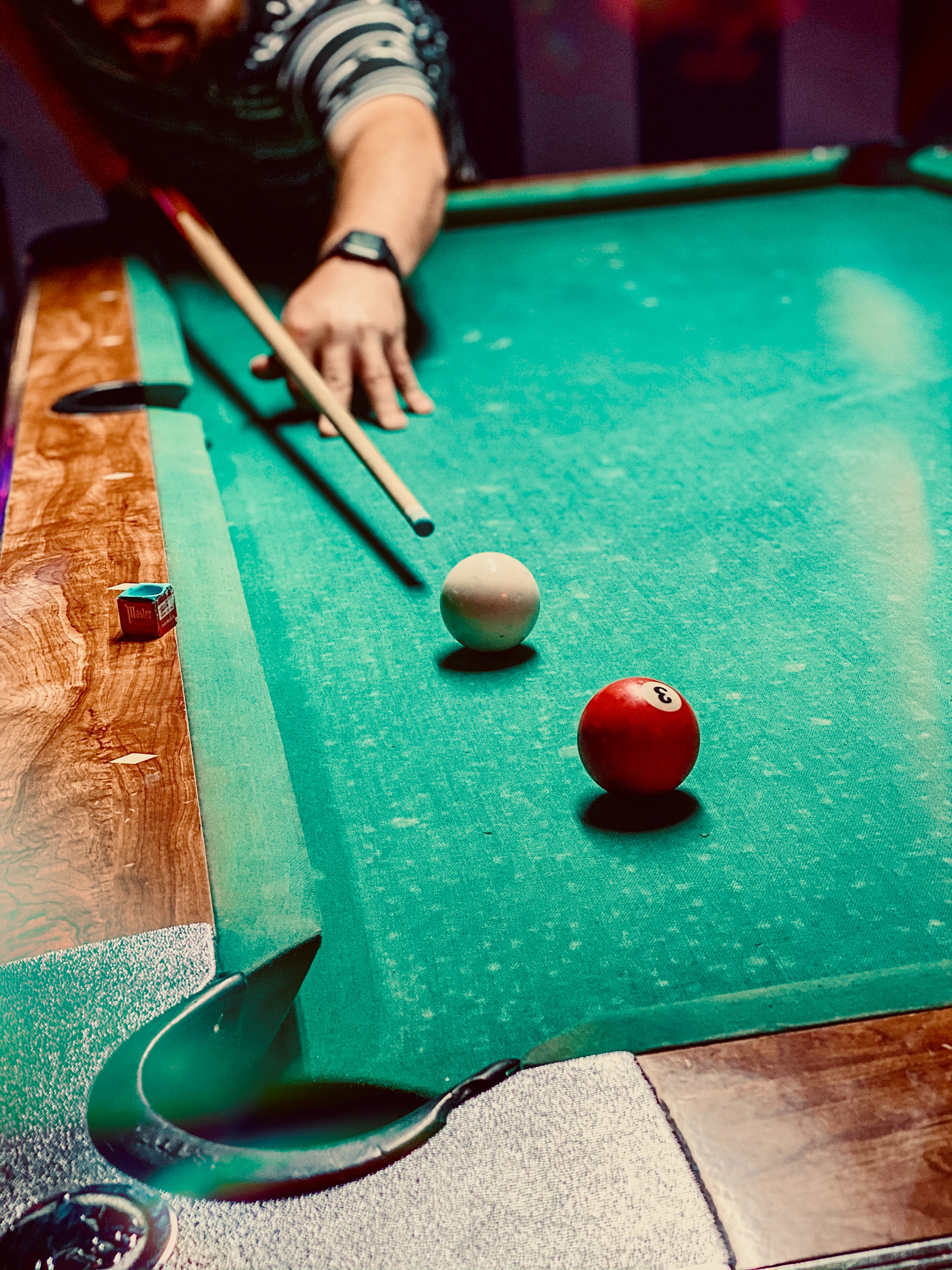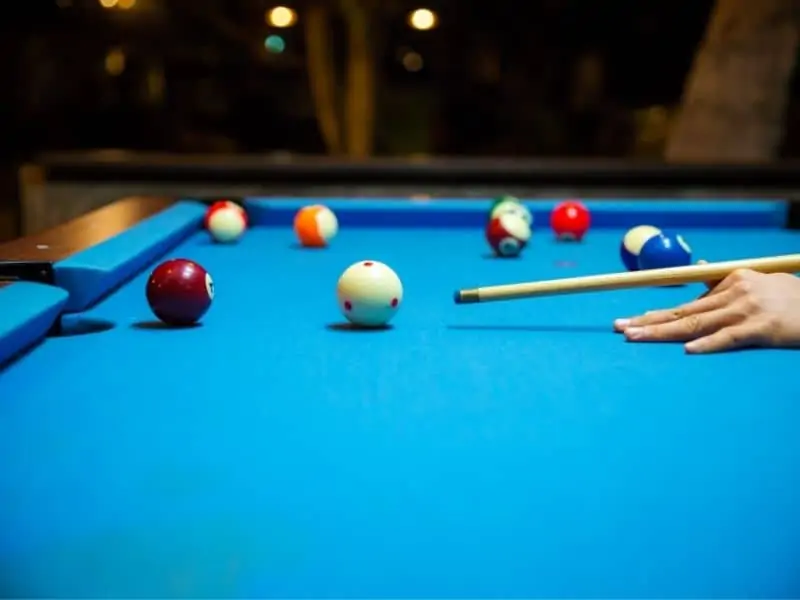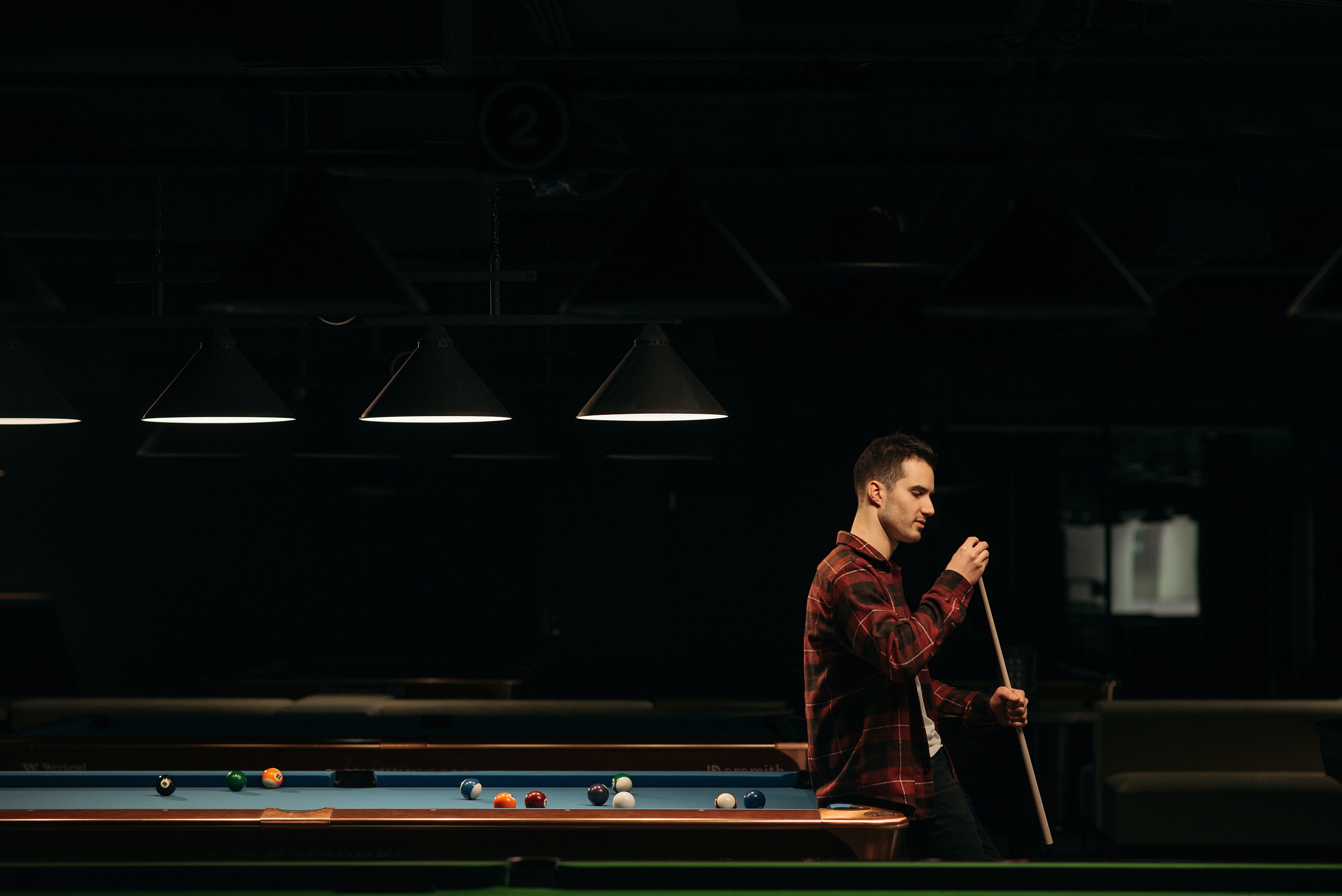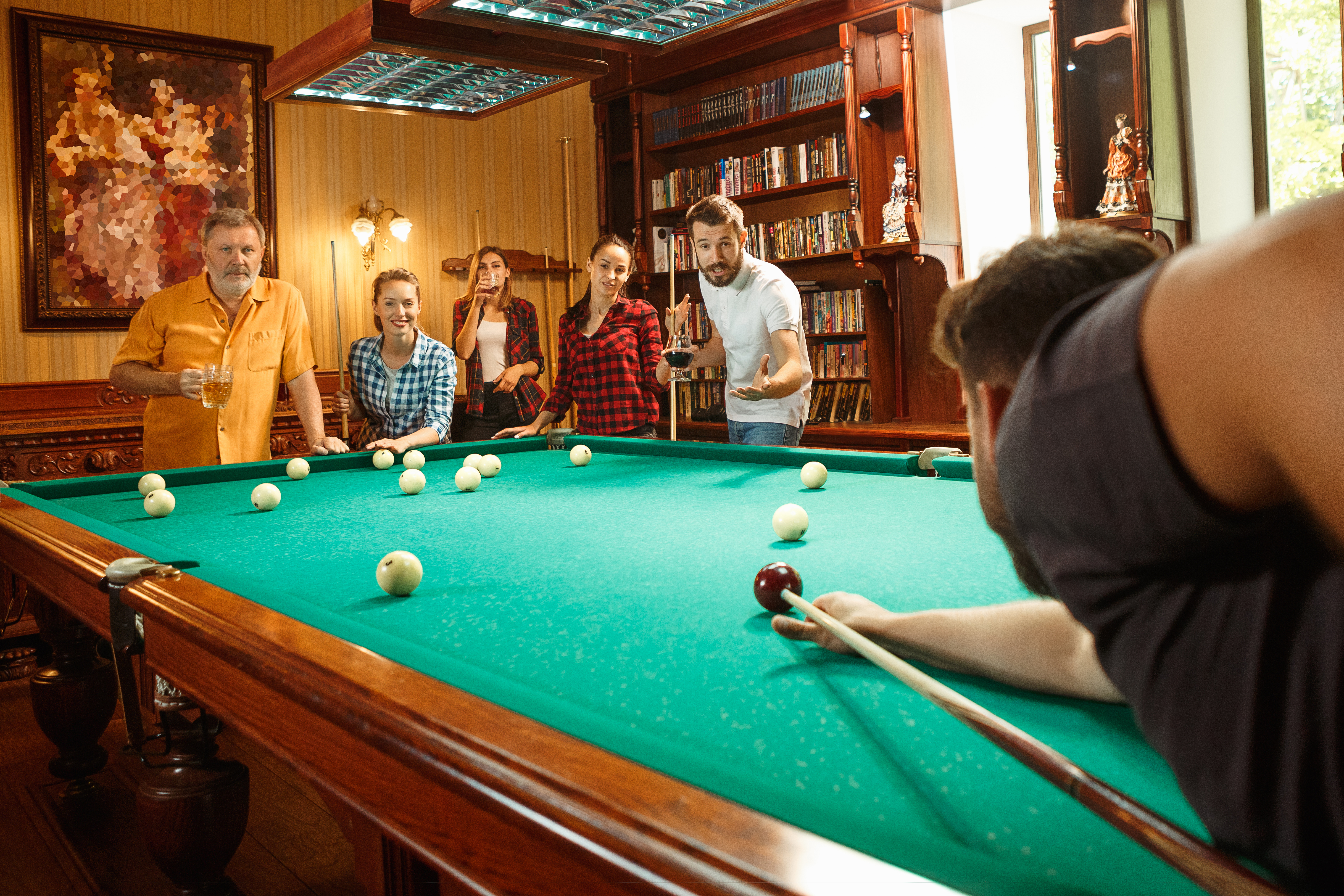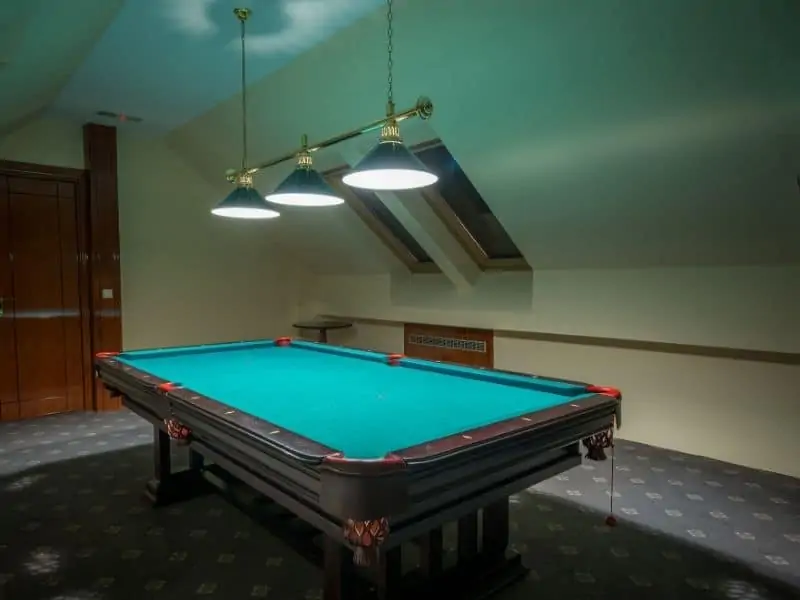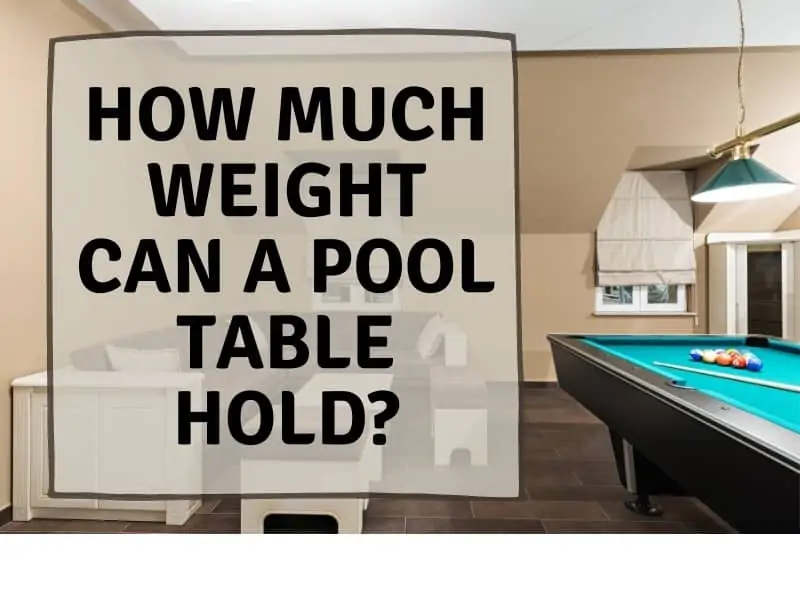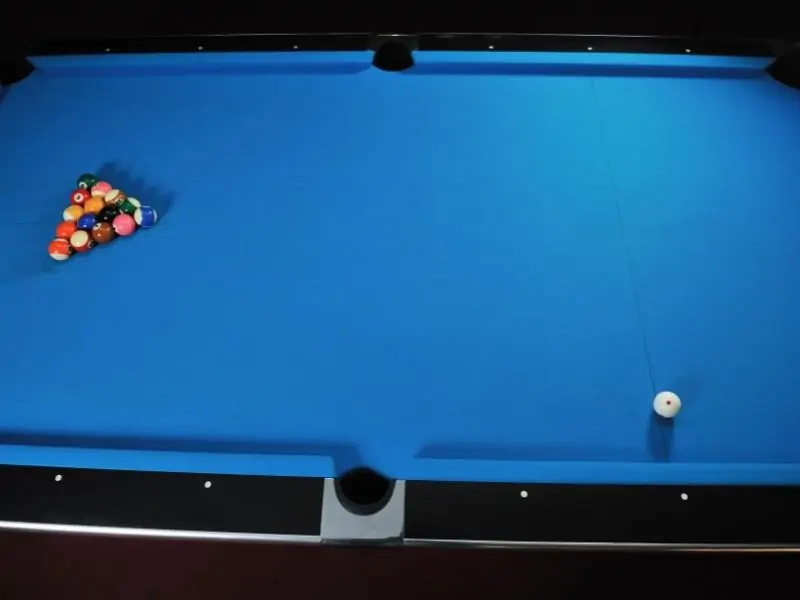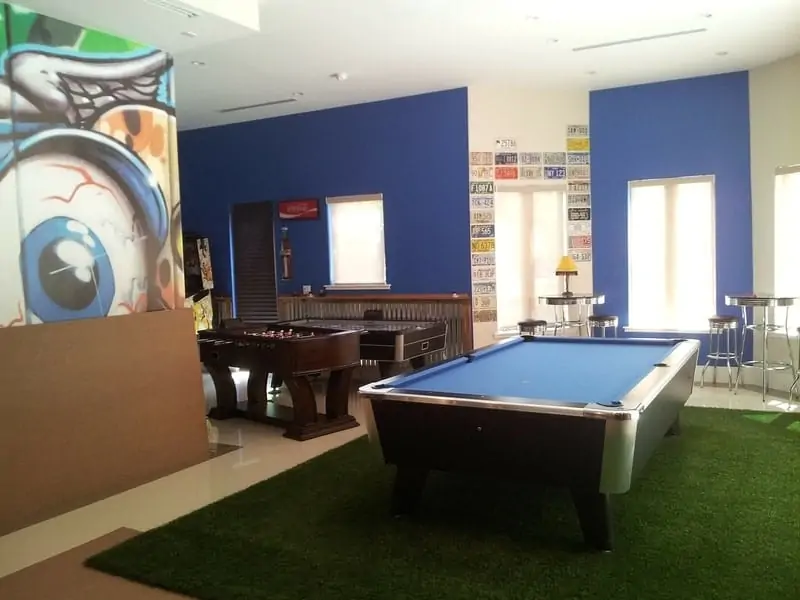If you’ve played pool for any length of time, chances are you’ve played with a few warped pool cues. This is especially true if you do the majority of your playing at a pool hall or bar as house cues are notorious for not only being warped, but just in bad shape in general. But what causes a pool cue to warp anyways?
There are many reasons why pool cues warp including excessive exposure to heat and cold, moisture absorption, improper storage, poor cue maintenance, and poor quality wood being used in the construction of the cue itself. However, most warping can be prevented simply by keeping your cue in a case when not in use and stored in a dry, room temperature environment.
In this article we’re going to discuss everything you need to know about a warped pool cue including how to check for warping and how to prevent it.
What Causes a Pool Cue to Warp?
Because pool cues are made of wood they, like other wood products, naturally expand and contract as temperatures change. And because wood, and therefore pool cues, are porous, they have the ability to absorb moisture. Both of these factors play heavily in a pool cues ability or tendency to warp.
Because of these not so favorable characteristics of wood, cue manufacturers (good ones anyways) implement various drying and sealing processes to remove and lock out moisture. These processes vary per manufacturer but generally consist of a drying period which removes moisture from the wood followed by an application of sealant to keep moisture locked out.
Because of woods susceptibility to moisture and the negative effects it can have on pool cues, great lengths are taken to combat it. However, the effects of these anti-moisture and anti-warping processes can be quickly negated if subject to the right conditions causing your pool cue to warp.
In this section, I’ll share with you some of the most common causes of a warped pool cue so you’ll know how to avoid having it happen to you.
1. Excessive Temperatures
Exposing your pool cue to excessive temperatures is not a good idea. Doing so can cause your cue to warp for reasons we’ve already discussed. Therefore, you should never leave your pool cue in the car or any other area where the temperature surrounding the cue is unregulated. If possible, always store your cue in a climate controlled location to help prevent warping.
2. Too Much Moisture
Moisture is your pool cues biggest enemy. Because pool cues are porous, they will naturally absorb moisture if measures aren’t taken to prevent it. Too much moisture being absorbed by your cue will eventually lead to warping. Never store your cue in a damp basement or any other area with high humidity. Also, its a good idea to burnish your cue from time to time to help close its pores and lock out moisture.
3. Poor Quality Materials
Not all pool cues are made equally. Some cue manufacturers simply use better materials than others. And the processes they implement to help prevent warping will differ as well. Both the quality of materials being used and the measures taken to prevent warping will play a role in a particulars cues tendency to warp. For this reasons its always a good idea to buy from a reputable company that uses high quality woods and implements an effective drying and sealing process. Most of them that do will even offer a warranty against warping.
4. Poor Cue Maintenance
Poor cue maintenance can leave your cue susceptible to damage and warping over time. Your maintenance routine should consist of more than just cleaning your cue. You should also burnish it. Burnishing your cue will help close the pores that often absorb moisture. On top of that you should seal your cue every so often. A good cue wax or sealant will add a layer of protection to your cue and help lock out moisture and prevent warping.
5. Improper Storage
Failing to store your cue properly can result in warping. If possible, always keep your cue in a **hard casewhen not in use. Alternatively, it should be kept upright in a cue rack**. The worst way to store your cue is leaning against a wall. Given enough time, this will cause your cue to warp.
6. Excessive Stress
Pool cues aren’t meant to endure lateral stress. Propping your cue against the wall or leaning on it after a shot can cause it to warp. If you have to lean your cue on something while waiting your turn at the table, its better to keep it in a pool cue holder. They’re designed to keep the cue upright with minimal stress on the shaft.
Related Article: The 5 Best Portable Pool Cue Holders
How to Tell if a Pool Cue is Warped
Determining if a pool cue is warped is fairly simple and there are a few methods you can use to do so. The first, and most reliable method, is called sighting. Alternatively, you can roll your cue across a flat surface and look for any wobble. Lets talk about both in more detail.
Sighting a Pool Cue
Sighting a pool cue is typically the most accurate way to check for warping. To do so, hold the butt end of the cue at eye level, with the tip of the cue facing away and at a slight downward angle. Slowly rotate the cue 360 degrees as you observe the shaft and especially the tip. If you see any bends in the shaft, or if the tip moves irregularly, you know you’ve got a warped cue.
Rolling Your Cue on a Flat Surface
Alternatively, you can roll your cue across a flat surface and check for wobble. However, this method isn’t the most reliable in that it requires a perfectly flat surface. And while pool tabletops are obviously flat and generally level, small imperfections or variations in the felt can cause your cue to wobble even if the shaft itself is straight.
Warp Detection Tools
Another quick and easy way to determine if your cue is warped is with this shaft straightness indicator tool. Its pretty compact and comes with its own case. Its perfect for carrying to the pool hall or bar and works well for determining if a pool cue is warped or not.

Should You Play With a Warped Pool Cue?
For most casual players, playing with a warped pool cue isn’t a big deal. Unless the warp is severe, it’ll most likely go completely unnoticed. Id be willing to bet that most of the cues you use at the pool hall or bar have some degree of warping to them. But even so, they work just fine for most novice players.
However, for those who play competitively or have obtained a higher degree of skill at the table, the effects of a warped pool cue are certainly felt. For them, playing with a warped pool cue is equivalent to someone playing golf with a bent club.
But really it all comes down to how serious you take the game. For casual play, a warped pool cue isn’t going to harm much. For competitive play, a warped cue is unacceptable.
Can a Warped Pool Cue Be Fixed?
Minor bends in a pool cue can be fixed quite easily. You can do so simply by bending it back by hand. Place the tip of your cue on the floor with the cue itself at a slight angle. Then place the palm of your hand against the warp and press down on it. Keep applying pressure until the bend it straightened out.
The Steam Method
If the bend is bad enough, you may have to add a little heat to help bend it back in shape. This method requires you to place the bend of your cue over a pot of boiling water on the stove. The steam from the boiling water will help make your cue a bit more flexible, allowing you to bend it more easily.
With the warped section of your cue over the boiling water and the tip of the cue placed downward on the stove, again, use your own body weight and strength to bend the cue back in place.
Shaft Straightening Tools
Alternatively, you can try a shaft straightening tool like the one in the video below. I cant personally vouch for how well it works, but it certainly seems to have helped the cue this guy was working on!
How to Prevent Your Cue From Warping
Fortunately for us all, preventing a pool cue from warping is fairly easy and straight forward. With a bit of knowledge and forethought you can keep your cue straight for a lifetime with minimal effort. Here’s a quick list of what you should and shouldn’t do to prevent your cue from warping.
Do
- Keep your cue in a case or rack when not in use
- Keep your cue in a climate controlled environment away from extreme temperatures and humidity
- Burnish and seal your cue regularly
- Buy from a reputable company that offers a guarantee against warping
Do Not
- Leave your cue in the car where it can be exposed to excessive sunlight, temperature changes, and moisture
- Prop your cue on a wall. Use a cue holder instead
- Lean on your cue between shots. Doing so puts excessive stress on teh cue which its not designed to handle
- Clean your cue with abrasive materials. Doing so will open its pores and allow moisture into the wood
- Forget to do the do’s
Alternatives to Wood Cues
Most players enjoy using wooden pool cues because of the way they feel and play. However, the fact that they can warp is a big turn off for some. And although warping can be prevented by following the steps outlined above, some of us just don’t want the headache. I get it.
Fortunately, there are other options available that are more warp resistant without the headache involved.
Composite pool cues such as those made with fiberglass or graphite are extremely warp resistant regardless of the conditions they’re left in. These cues are generally composed of a wooden core that’s encapsulated by a layer of fiberglass or graphite. This protective outer layer completely seals the wood, thus preventing moisture absorption from being a problem. It also further protects against dents, dings, and scratches.
However, this additional protection comes with a price: feel. The biggest drawback to fiberglass or graphite pool cues are the way they feel. They tend to stick to the bridge hand and generally don’t provide the same “shot feel” as wooden pool cues do. However, if you’re not overly concerned with feel, and want something with a bit more durability, a fiberglass or graphite cue may be the way to go.
Cuetec makes some really good composite cues but they can be a bit pricey. This Cuetec Graphite Series comes in around $200 but it has some really great features such as the Veltex grip, Tiger Everst multi-layer tip, adjustable weight bolt system, and a 15 1/2” Pro Taper. Not to mention its graphite, so warping isn’t going to be an issue.
Alternatively, you can get your hands on some really affordable fiberglass cues, but they wont have the same features as the Cuetec cue mentioned above.
In Conclusion
As you can see, pool cues warp for a number of different reasons, However, preventing your cue from warping isn’t that difficult and only takes a bit of knowledge and forethought. And if you don’t want to give any thought to keeping your cue from warping, there are options for that too.
Other Articles You May Be Interested In
- Can a Slate Pool Table Warp? What You Need to Know
- Are Viper Pool Cues Any Good? What You Need to Know
- Do Pros Use Low Deflection Shafts?
- Players Pool Cues: All Your Questions Answered
- Best Pool Cues for the Money: A Cue for Every Budget
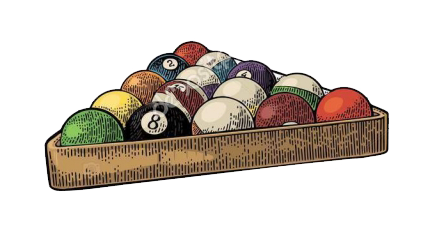
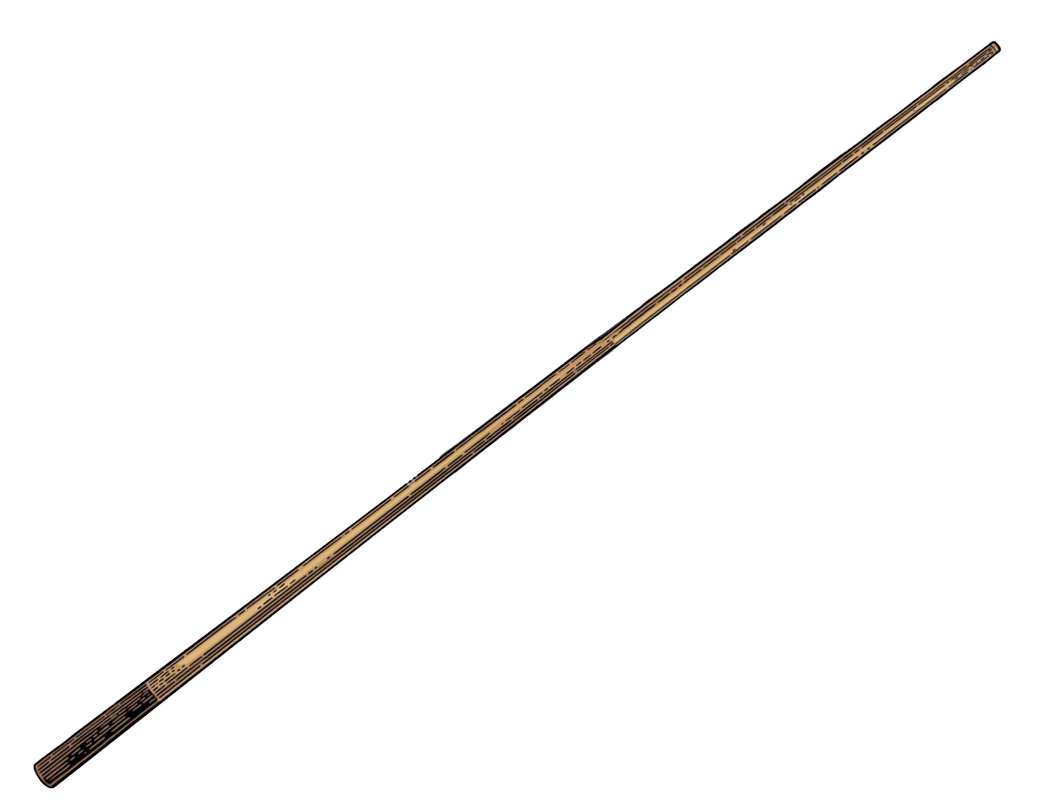


.webp)
